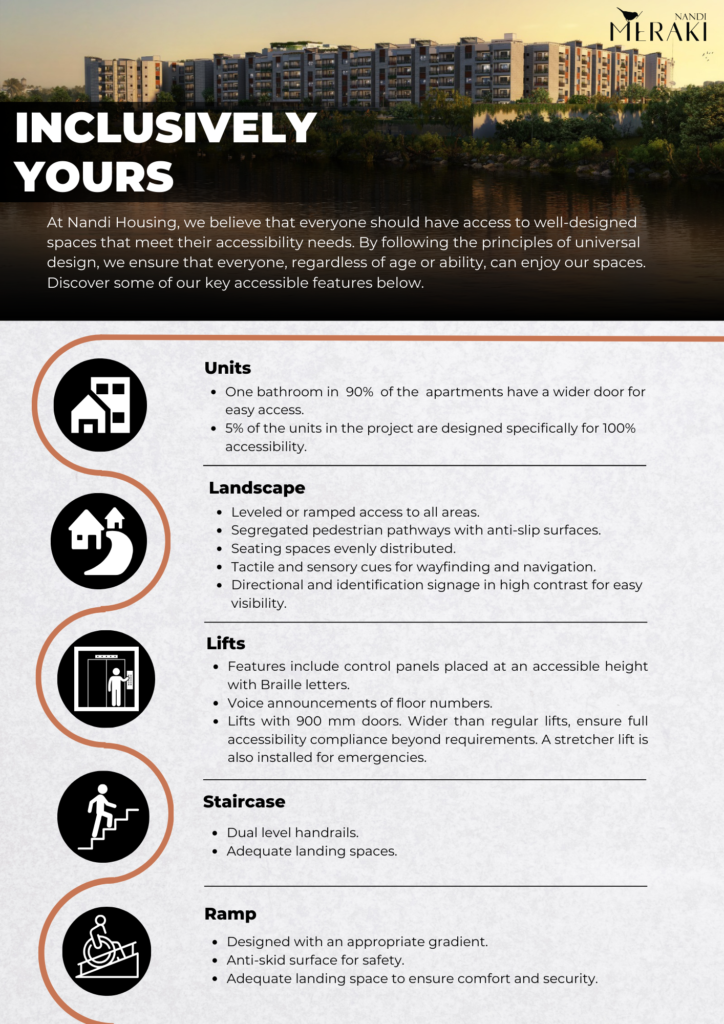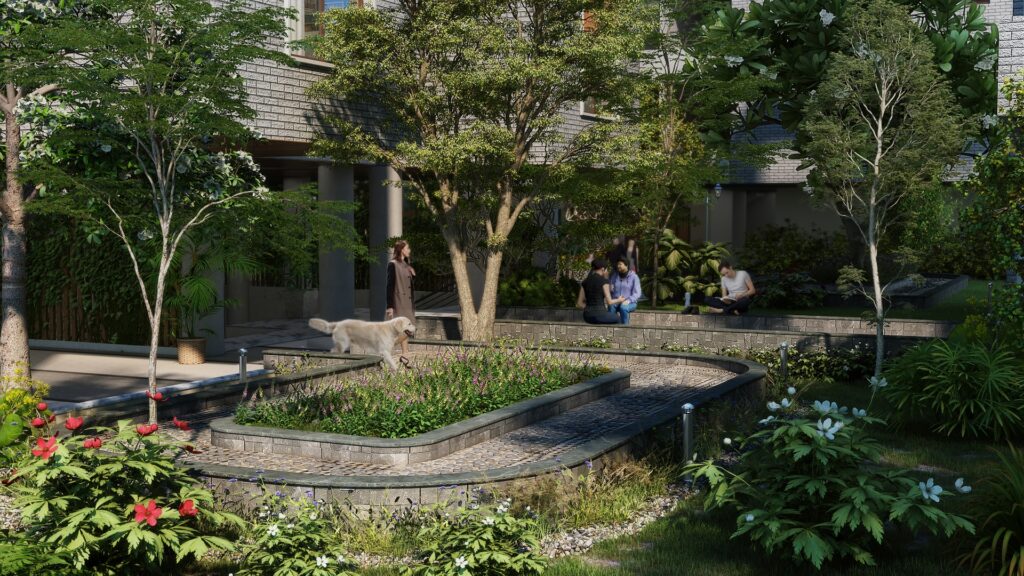Understanding Accessibility and Inclusivity in Urban Developments
Accessibility and inclusivity are becoming increasingly important for developers, architects, and urban planners. Creating environments that accommodate the diverse needs of all individuals, including older adults, people with disabilities, and families with young children, is essential. By prioritizing these factors, communities can significantly enhance the quality of life for their residents, fostering spaces that are welcoming, safe, and comfortable for everyone.

Universal Design Principles
The foundation of accessibility and inclusivity lies in the concept of universal design. This approach aims to create environments that are inherently accessible to everyone, without the need for adaptation or specialized design. Ronald Mace, often referred to as the “father of universal design,” was an American architect and product designer who pioneered the concept of creating products and environments that are usable by all people, to the greatest extent possible, without the need for adaptation. Mace’s work has had a profound impact on the design world, promoting the idea that good design should be inclusive and accessible to everyone.
Universal design principles include:
- Equitable Use: The design is useful and marketable to people with diverse abilities.
- Flexibility in Use: The design accommodates a wide range of individual preferences and abilities.
- Simple and Intuitive Use: Use of the design is easy to understand, regardless of the user’s experience, knowledge, language skills, or current concentration level.
- Perceptible Information: The design communicates necessary information effectively to the user, regardless of ambient conditions or the user’s sensory abilities.
- Tolerance for Error: The design minimizes hazards and the adverse consequences of accidental or unintended actions.
- Low Physical Effort: The design can be used efficiently and comfortably and with a minimum of fatigue.
- Size and Space for Approach and Use: Appropriate size and space are provided for approach, reach, manipulation, and use regardless of the user’s body size, posture, or mobility.

The Broader Impact of Inclusive Design
The benefits of inclusive design extend far beyond individual convenience. By creating environments that accommodate diverse needs, we promote social interaction, reduce isolation, and enhance the overall quality of life for residents. Inclusive design fosters a sense of belonging and community, as everyone feels welcome and supported. Additionally, these design principles can improve the value of real estate developments, as they cater to a broader audience.
Incorporating inclusive design in real estate projects sets a benchmark for future developments. It inspires others to prioritize accessibility and inclusivity, ultimately leading to more thoughtful and compassionate urban environments.
Word from the Expert
Rama Krishnamachari, the co-founder of DEOC (Diversity and Equal Opportunity Centre) and our accessibility consultant, underscores the importance of these features in fostering an inclusive community. In her insightful video, she states:
“I think that people with disabilities are invisible. The reason they’re invisible is because of lack of accessibility. People are stuck within the four walls of their own homes. Because there are so many barriers that exist in the community, they’re not able to step out. When we have a place like the way Nandi Meraki is aiming to, it is going to really create a tribe that cares.”
For a deeper understanding of Nandi Meraki’s inclusive design philosophy, you can watch Ms. Krishnamachari’s full expert video below.
Nandi Meraki’s Inclusive Design
Nandi Meraki, the latest project by Nandi Housing, exemplifies the application of universal design principles to create a living environment that is inclusive and accessible to all. This commitment to inclusivity is reflected in various features incorporated throughout the development:

About Nandi Housing
Nandi Housing is a leading real estate developer known for its commitment to sustainability, innovation, and inclusivity. With a track record of delivering high-quality projects, Nandi Housing aims to create living spaces that enhance the well-being of their residents. Nandi Meraki, the latest project, embodies this vision. Located in South Bengaluru, Nandi Meraki offers modern amenities and thoughtful design features that cater to the needs of all residents. From accessible units and landscaped gardens to community spaces and recreational facilities, Nandi Meraki is designed to be a place where everyone feels at home.

Experience the Inclusive Community at Nandi Meraki
Discover the inclusive and accessible living experience at Nandi Meraki. Visit our website to learn more and schedule a visit. Join us in building a community where everyone feels at home. Let’s build a future where everyone belongs.


